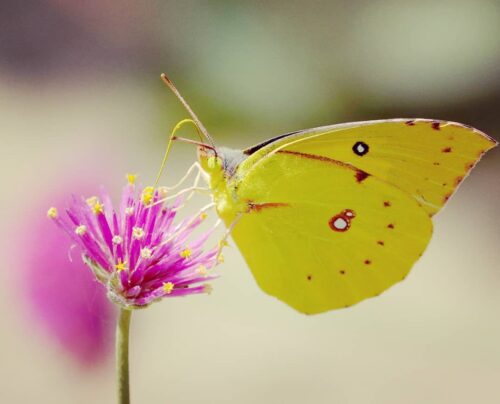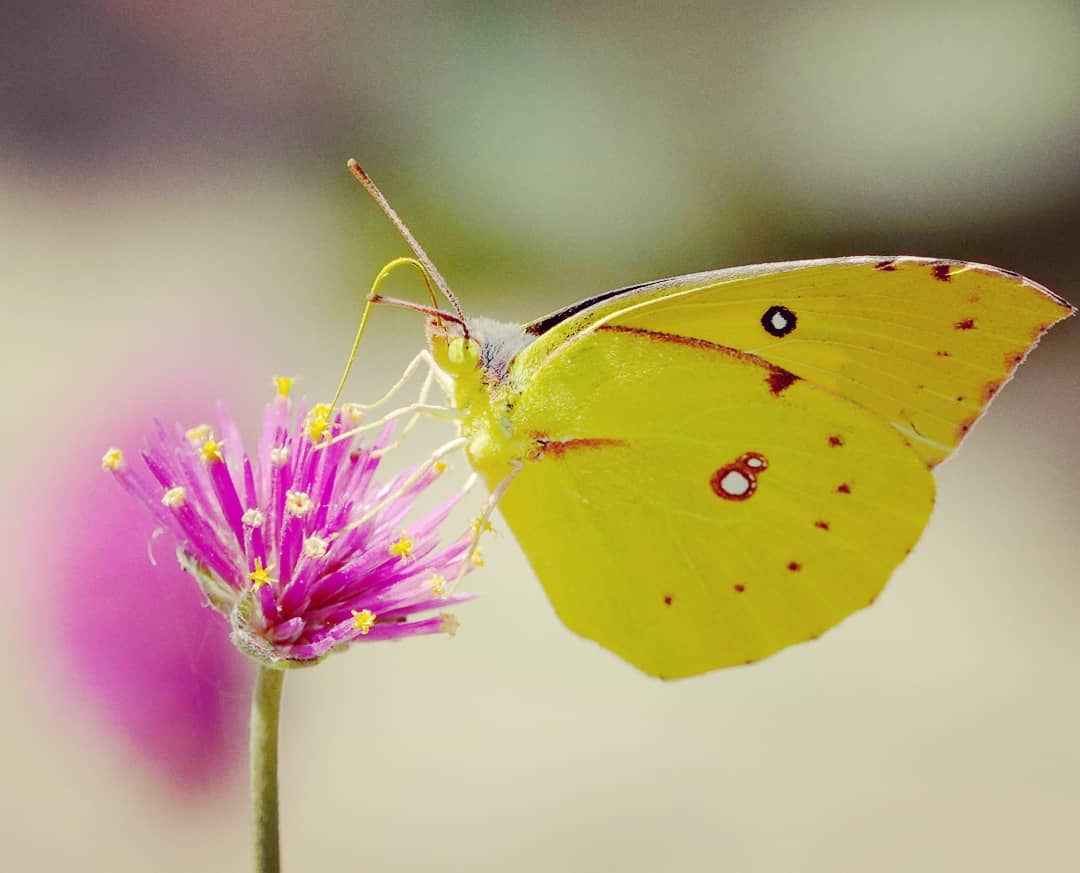Find How to Help California Dogface Butterfly with this detailed post and learn more about this beautiful insect.
California Dogface Butterfly (Zerene eurydice) is the state insect of California. It is found in the Coastal Range along with the Sierra Foothills and the Sacramento region. Just like the popular monarch butterfly, the population of this species is reducing drastically. In this post, you will find How to Help California Dogface Butterfly and why it is important.
Appearance of California Dogface Butterfly

This butterfly cannot be seen hovering around the flowers but can quickly fly fast at around 20 feet (6 meters) off the ground. However, they do fly down to visit the flowers of California buckeye and other native plants in the region.
The forewings of females resemble two yellow fall leaves, pale and papery, adorned with a dark spot, while the hind wings are yellow. Males, occasionally named flying pansies, have dark forewings with an orange-yellow marking that is said to compare a dog’s head in silhouette, though you might need to squint to see it. The male’s hind wings are a mix of orange and yellow.
Importance of Dogface Butterfly in California
If you’re curious about the significance of the dogface butterfly in California, remember the word “pollinator.” Alongside bees, butterflies are among the top pollinators, and the California dogface butterfly is also on the list.
This butterfly species enjoys the nector of mustard family plants and also functions as a main pollinator of this plant family. Additionally, it plays a crucial role in pollinating other California native plants, such as the California buckeye tree, thistle shrubs, and tall blue verbena.
Life Cycle of the Dogface Butterfly
The life cycle of this species starts when males search for females and begin mating. After that, females lay pale eggs on the leaves of False Indigo (their host plant). As the eggs mature, they turn crimson before hatching into larvae.
The larvae feed on the foliage of indigo plants. Their greenish hue matches the foliage of the false indigo plant and provides effective camouflage. Over time, they metamorphose into adult butterflies and feed on the nectar of native plants. This life cycle repeats during two brooding periods: one from April to July and another from August to October.
What to Plant to Attract Dogface Butterfly
If you love California native plants and also want to support the dogface butterfly’s life, grow their favorite plants in garden beds in the backyard. The best way to support them is by growing the best host plant for this species. For this, include the false indigo plant in your backyard; the dogface butterfly lays its eggs on the plant, and the larvae depend on its leaves for nourishment.
Other native plants offer nectar to adult dogface butterflies. The best ones are;
- California buckeye, a stunning shade or ornamental tree for spacious backyards, and various mustard family plants.
- Thistles and tall blue verbena (also called blue vervain) also serve as nectar sources.
Since these butterflies are particularly attracted to purple blossoms, if in doubt, choose native plants with purple flowers.
How to Help California Dogface Butterfly
This native Golden State insect earns protection because its proven role as a pollinator further highlights the importance of supporting its survival as a species. Gardeners can contribute by promoting the growth of their host plants and food sources and avoiding the use of chemicals and toxins in their landscapes.
Predators of the Dogface Butterfly
Some predators of this species are small insects such as wasps, ants, spiders, parasitic flies, and parasitic wasps, and large predators like rats, toads, birds, snakes, and lizards.



